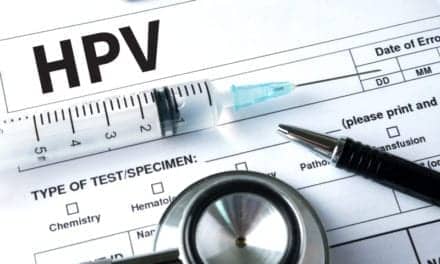Summary: Hologic underscores the importance of combined Pap and HPV testing as the gold standard for cervical cancer screening, highlighting the need for comprehensive guidelines to combat this preventable disease.
Takeaways:
- Support for Dual Testing: Hologic emphasizes that combining Pap and HPV testing identifies more cervical pre-cancer and cancer than either test alone, reinforcing its role as the gold standard for women aged 30-65.
- Cervical Cancer Disparities: Despite significant progress, cervical cancer continues to disproportionately impact Black and Hispanic women, underscoring the importance of routine screening and vaccination.
- Preserving Screening Options: The draft guidelines uphold the value of multiple screening strategies and shared decision-making, ensuring women continue to access the preventive care they need
Hologic, a provider in women’s health focused on developing innovative medical technologies that effectively detect, diagnose and treat health conditions, issued the following statement regarding the United States Preventive Services Task Force draft guidelines for cervical cancer screening:
“Today’s recommendations are an important acknowledgement of the role of Pap testing combined with HPV testing, which is the gold standard of care and the most effective method of identifying cervical cancer,” says Jennifer Schneiders, PhD, President, Diagnostic Solutions at Hologic. “Eliminating cervical cancer is within our reach and history has shown us that safeguarding the most comprehensive screening available is critical to that effort.”
Once the leading cause of cancer death in women, cervical cancer mortality rates have plummeted by 70% mainly due to cervical cancer screening. 1 Despite this progress, cervical cancer incidence is no longer declining and cases continue to disproportionately impact Black and Hispanic women, making a focus on routine screening and vaccination imperative. 2-4
Multiple studies and other research representative of real-world screening practices in the US demonstrate that screening women ages 30-65 with the Pap test combined with HPV test identifies more cervical pre-cancer and cancer than either test used alone. 5-8 The draft recommendations reinforce the value of all three cervical cancer screening strategies for women including Pap testing for women ages 21-29 years old. 9 The draft recommendations also continue to allow for shared decision-making between healthcare providers and patients and help ensure that women can continue to access the preventive care they need and deserve.
Hologic is committed to working with USPSTF and others within the cervical cancer community in support of final screening guidelines that preserve all screening options, improving our ability to combat this preventable cancer and save more women’s lives.
Further Reading
References
- American Cancer Society. Cancer Statistics Center. https://cancerstatisticscenter.cancer.org/?_ga=2.150839477.2044751383.1547156654-294386523.1544563210#!/. Accessed December 4, 2024.
- Surveillance, Epidemiology, and End Results (SEER) Program. SEER*Stat Database: Incidence – SEER Research Data, 8 Registries, Nov 2023 Sub (1975-2021). Accessed December 4, 2024. https://seer.cancer.gov/statfacts/html/cervix.html
- Beavis AL, Gravitt PE. Hysterectomy-corrected cervical cancer mortality rates reveal a larger racial disparity in the United States. Cancer. 2017;123(6):1044-1050.
- Office of Minority Health, US Department of Health and Human Services. Cancer and Hispanic Americans. https://minorityhealth.hhs.gov/omh/browse.aspx?lvl=4&lvlid=61. Accessed December 4, 2024.
- Austin RM, et al. Enhanced detection of cervical cancer and precancer through use of imaged liquid-based cytology in routine cytology and HPV co-testing. Am J Clin Pathol.2018;150(5):385-392. doi: 10.1093/ajcp/aqy114
- Blatt AJ, et al. Comparison of cervical cancer screening results among 256,648 women in multiple clinical practices. Cancer Cytopathol. 2015;123(5):282-288. doi:10.1002/ cncy.21544
- Kaufman H, et al. Contributions of Liquid-Based (Papanicolaou) Cytology and Human Papillomavirus Testing in Cotesting for Detection of Cervical Cancer and Precancer in the United States. Am J Clin Pathol. 2020:XX:0-0 DOI: 10.1093/AJCP/AQAA074
- Zhou H, et al. Clinical performance of the Food and Drug Administration-Approved high-risk HPV test for the detection of high-grade cervicovaginal lesions. Cancer Cytopathol. 2016 May;124(5):317-23. doi: 10.1002/cncy.21687.
- U.S. Preventive Services Task Force. Draft Recommendation Statement. Cervical Cancer Screening. December 10, 2024. https://www.uspreventiveservicestaskforce.org/uspstf/draft-recommendation/cervical-cancer-screening-adults-adolescents





